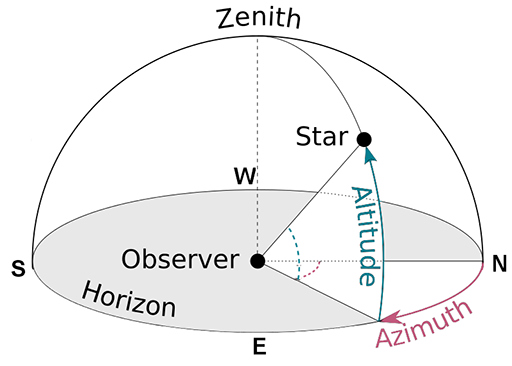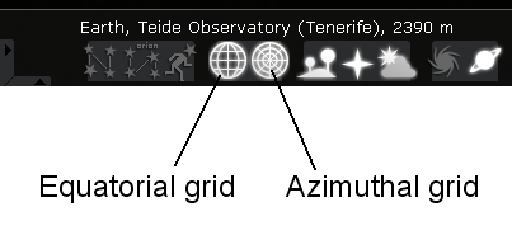3.2 The Altitude-Azimuth system
Simple telescope mounts often operate in much the same way as a camera tripod, using a combination of side-to-side (horizontal) and up-and-down (vertical) movements. With these two motions it is possible to point a telescope in any direction in the sky.
The Altitude-Azimuth (or Alt-Az) system of coordinates works on this principle, assigning angles to these horizontal and vertical movements.
The altitude refers to the height of an object above the horizon, measured as an angle. If the object is on the horizon it has an altitude of zero degrees. If it is directly overhead (a point referred to as the zenith) then it has an altitude of 90 degrees.
The other coordinate is azimuth and this refers to the angle of an object moving clockwise from north around the cardinal points east, south and west back to north.

A good way to get a feel for the Alt-Az coordinate system is to display the coordinates in Stellarium. This can be done using the Azimuthal grid icon in the lower toolbar (look for a circular icon that looks a little like a dartboard).

In addition to being easy to use, one of the main benefits of the Alt-Az coordinate system is that it is very useful in deciding when an object is well-placed for viewing, since one of the coordinates (altitude) describes the height of an object above the horizon. The conditions for astronomical viewing are best when an object is at least 30 degrees above the horizon, clear of any haze and turbulence. The Altitude-Azimuth system makes it easy to determine this.
